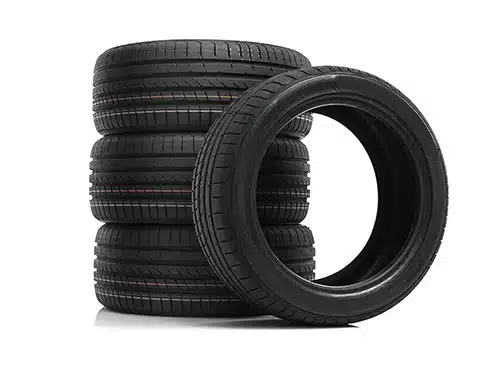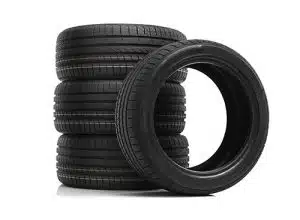
When to Replace Your Car Tires
Home » When to Replace Your Car Tires
How to know If My tires are safe to drive on?

The primary purpose of tread on a tire is to channel water from beneath the tire. This channeling greatly improves traction and keeps your car from hydroplaning on wet roads. Tires sold in the United States and other countries all have “tread wear bars”. These are small raised bridges created between the treads. While looking at the tread pattern you’ll see these bars between the treads, or running across the tires. As the tires wear down, these bars will become even with the tire’s tread. At this point you should replace your tires.
How to Check Tread Wear
The Penny Tread Test
A penny is a good way you can check the tread wear. Take a penny, and place it upside down with President Lincoln facing you in the center of the tread or the part of the tire with the most tread.
- Hold the penny with Lincoln’s head facing down (so the top of his head goes into the tread).
- Insert the penny into the tread groove—the deep channels that run across the tire.
- Check how much of Lincoln’s head is visible.
- If you can see all of Lincoln’s head, your tread depth is below 1/16 inch, which means the tire is legally worn out and should be replaced immediately.
- If part of Lincoln’s head is covered, your tread is still above 1/16 inch and likely safe for short-term driving.
Why 1/16" Is the Limit
When your tire tread reaches 1/16 of an inch, it’s considered the minimum legal limit in many U.S. states. At this point, tires are no longer safe for regular driving. Here’s why:
- Very poor wet traction – With shallow tread, your tires can’t effectively channel water away, leading to reduced grip on wet roads.
- High risk of hydroplaning – The lack of depth means your tires are more likely to hydroplane; skim over water instead of maintaining contact with the road.
- Legally worn out – In many states, driving with tread below 1/16″ is illegal and can result in fines or failed safety inspections.To stay safe, it’s a good idea to replace your tires before they reach this critical point — ideally around 2/16″ if you drive in rain or snow.
To stay safe, it’s a good idea to replace your tires before they reach this critical point — ideally around 2/16″ if you drive in rain or snow.
Use a Tread Depth Gauge
You can use a tread depth gauge. This type of gauge is readily available and inexpensive at your local auto parts store. Either use the tread pattern test, or purchase a tread depth indicator or gauge tool to measure the tire’s tread. It may might be easier to visit you local tire store and ask them to check them for you, but beware they may try to sell you tires even if you don’t need them yet. That’s is why is good to know how to check them yourself and get a second opinion from the tire store. Know the legal requirements. Replace worn tires As a matter of Its common sense and to assure safety. But in some jurisdictions, there are also legal requirements to replace worn tires. Tires are considered unsafe when they have worn down to 1/16″ (1.6mm) of their remaining tread depth.
4x4 and AWD Tires
If you have a 4×4 or AWD (all wheel drive) car or truck you should replace all four tires according to your service manuals recommendation. A difference in tire diameter due to different states of tread wear can permanently damage your trucks differentials. If your front tires are wearing uneven, likelihood is that the front end is out of alignment. You should have this checked and rotate the tires to the rear if possible (some vehicles have different sizes on front than the rear). The tires from the back should be fine and the uneven tires moved to the rear will start to correct themselves.
Tires do not wear perfectly evenly, so be sure to insert the coin at several points from the outside to the inside of your tires. Tires generally wear more on the inside but over-inflated tires will wear more in the middle. Test all of your tires and if possible, replace them all at the same time. Mismatched tires will not provide the same safety, performance and efficiency, as a matched pair will. In order to insure proper tread wear tires should be properly inflated.
Alignment and Suspension Issues
Make note of any irregular tread wear. This could indicate a wheel misalignment, the need for a tire rotation, or both. Uneven tread wear is a sign that you need to take your car in for servicing.
If uneven tire wear is extreme or if tires wear out much faster than expected, have a competent tire workshop check your suspension and correct as necessary before replacing tires. Improper alignment or worn suspension parts can dramatically shorten a tire’s life. It is a good idea to rotate your tires from front to rear in pairs. Take both front tires and move them to the rear and vice versa.
